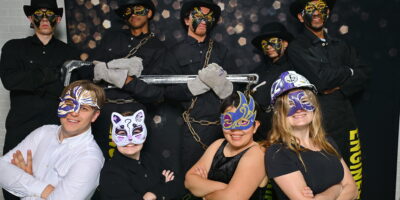This year I had the opportunity to attend ESSCO Annual General Meeting (AGM) at McMaster University along with 4 other delegates from Waterloo Engineering’s B-Society. Through a variety of enlightening and interactive sessions we learnt about importance of mental health, planning a successful event, public relations, ethics of leadership, mastering the art of meetings and many more. In this article I will talk about only some of those sessions.
The mental health and leadership workshop talked about different mental health issues faced by Engineering students. Transition from high school to university is hard for everyone. Different environment, high expectations, maintaining high school averages, and juggling assignments and extra-curricular activities were some of the many concerns faced by the students. During our discussions we also talked about how engineers work well in teams and support each other unlike other programs that are very competitive. We learnt about different strategies that we could adopt to help those having a hard time. Being more empathetic, patient, and encouraging always helps. At the end, they shared various go-to-people for dealing with these issues such as residence coordinators, faculty advisors, mental health office and peer-mentorship programs.
Planning an event soon? Worried about managing volunteers, venue, transportation, food, promotion and million other things? Worry no more, the next bit talks about the various strategies that could be employed for hosting a successful event which were discussed in the session “Empowered Event Planning” presented by McMaster’s student success office. Follow the event planning cycle: Dream, Design, Deliver and Debrief and you are good to go. Brainstorming for ideas and setting SMART goals is an awesome start for an amazing event. If running a team, then one needs to learn the art of delegation for efficiency and development and later following up with the members to check the progress. Now that you have designed the idea for the event, we would now switch gears to deliver those wonderful ideas. Setting up promotion strategies, reaching our to diverse students, and selecting volunteers are some of the next steps. In the end, getting feedback from all the attendees helps in evaluating the success of the event and how it could have been improved.
I personally enjoyed the session “Managing public relations for Engineering Societies” very much. It was presented by Zachary Strong, McMaster alumni, in an entertaining fashion. It started with highlighting articles that had been published in the past that painted negative image of Engineering students in different schools and then transitioned into how we can handle or avoid those situations. Accepting mistakes and being humble helps cool down those situations.
The other session was on “Gender composition of Canadian engineering students” which talked about gender differences in Engineering societies and presented data and trends for different programs in various Universities. Some disciplines like bio-systems, chemical, and civil engineering did not have a wide gap as other disciplines like computer, mechanical, electrical and others. Delegates from other universities talked about the various programs that are being run in their universities to support women in engineering.
On the last day, Howard Brown, President of Brown and Cohen Communications gave a talk on importance of positive representation as engineering students. Lastly we got a chance to visit the Canadian Warplace Heritage Museum, which was an amazing experience on its own.
I would like to thank EngSoc for giving me the opportunity to attend this conference where not only did I learn a lot from all the sessions but I also got a chance to meet executives from other engineering societies and we got the chance to share our experiences and different practices followed by our engineering societies. To sum it all, it was a great experience and I hope a lot more students get involved in EngSoc and make the best out of it.




Leave a Reply